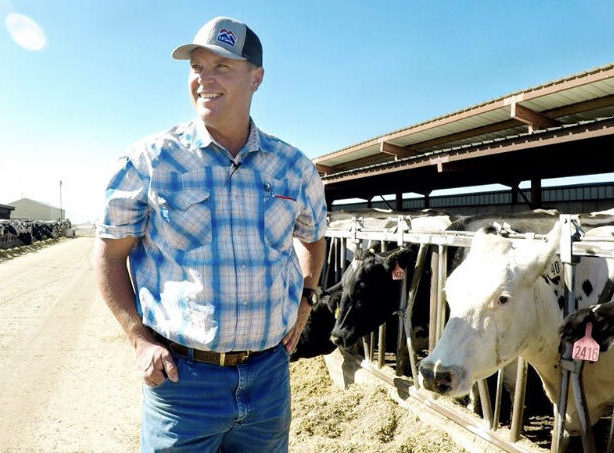Can Farmers Save the Great Salt Lake?
There’s no silver bullet to solve Utah’s water crisis, but farmers are doing their part by choosing to do more with less.
The Bear River flows out of Wyoming’s Uinta Mountains, winding 350 miles through sagebrush meadows and agricultural fields in Idaho and Utah before it fans out into wetlands 50 miles north of Salt Lake City. It’s the longest river on the continent that does not drain into the sea, and the largest source of water filling the Great Salt Lake.
One of the river’s last stops before it reaches the lake is Mitch and Holly Hancock’s farm, NooSun Dairy. Like hundreds of other farmers, the Hancocks divert water from the Bear River to irrigate crops like alfalfa hay and corn that feed their 3,000 cows.

Since they live in the desert, the Hancocks spend a lot of time asking themselves how to protect and maximize their water, which Holly calls “one of our most valuable resources.”
“The only thing we can control on our farm is how efficient we are,” Holly explains. She was born on the farm in 1982, the same year her parents bought it. She says one of the family’s guiding principles for managing their business is: “How can we improve our processes so that we do more with less?”
Holly and Mitch recently made several improvements to their irrigation system to conserve water. They piped the farm’s earthen ditches so less water is lost to evaporation or seepage as it travels from the river to their fields. Mitch recounts that before the piping project, it took 45 minutes for water to reach one of their hay fields. Now it takes 45 seconds. “All that savings from point A to point B now stays in the lake,” Mitch says. “And every inch helps, right?”
Farmers and ranchers are key to helping solve Utah’s water crisis. In the face of a shrinking Great Salt Lake, irrigators like the Hancocks are stepping up to voluntarily conserve water in creative ways. And the benefits go both ways: Not only do such efforts keep the lake and its ecosystem alive, they also help agricultural producers grow food more efficiently.

